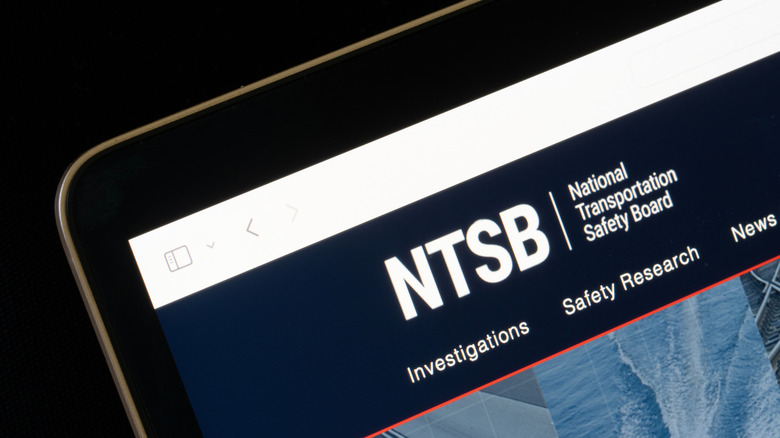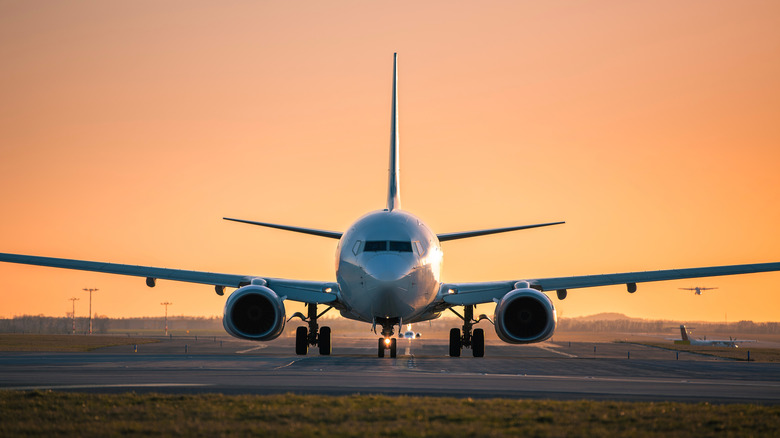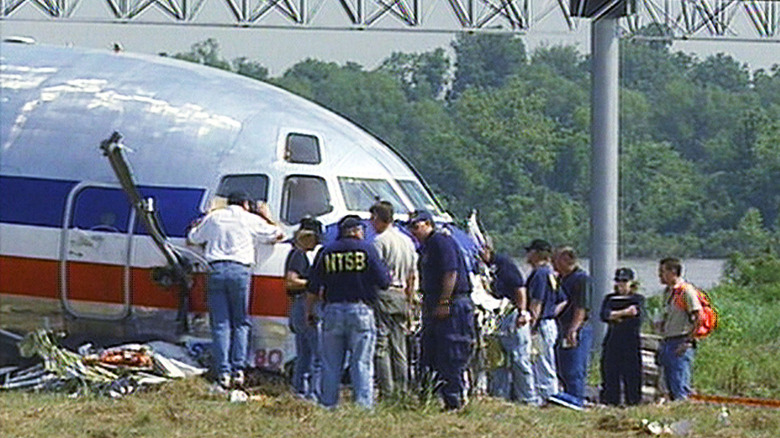What Does NTSB Stand For & Why Is The Organization Always Involved In Plane Crashes?
2025 has not been a good year for air incidents, beginning in January with the Washington, DC mid-air collision between American Airlines Flight 5342 and a military helicopter that we ranked as one of Aviation's 10 worst accidents. Air accidents that take lives are not only frightening but they tend to dominate the news. As you watched the coverage or read about these incidents, you may have noted that the NTSB is often mentioned and always involved, but perhaps you don't know why.
The NTSB stands for the National Transportation Safety Board, which is an independent federal agency that is tasked with investigating civil aviation accidents in the U.S. It also investigates accidents having to do with other forms of transportation, including railroad, transit, and highway.
Congress created the NTSB in the late 1960s, but it actually dates back to the Air Commerce Act of 1926, when the U.S. Department of Commerce was deemed responsible for investigating air crashes. The NTSB's primary goal when investigating accidents is to determine the cause and recommend changes to prevent similar accidents from happening in the future.
The importance of independence
The NTSB's inception in 1967 was part of a congressional consolidation of all transportation agencies into the U.S. Department of Transportation. However, in 1974, Congress reestablished the organization as separate from the U.S. Department of Transportation.
Congress reasoned that independence was crucial for the NTSB to avoid conflicts of interest and ensure objectivity, especially considering that NTSB investigations may find problems with Department of Transportation regulations or policies. Independence allows the NTSB to make recommendations without pressure or the fear of retribution from internal or external factors.
The NTSB is not part of the Federal Aviation Administration (FAA), though the FAA is automatically involved in all NTSB aviation investigations. Similarly, the NTSB has no official relationship with any private company, including manufacturers and airlines. That being said, the organization can and does interact with private companies through what it calls the party system.
The NTSB's party system is part of its investigative process, wherein it can designate other companies as parties to the investigation. For example, if an air accident involves a plane made by Boeing, such as Alaska Airlines Flight 1282, which experienced an in-flight exit door plug blowout in 2024, the NTSB may request that Boeing be named a party to the investigation. The manufacturer could have information that could help the investigation.
How the NTSB conducts its investigations
Every NTSB investigation is different depending on the type and scale of the incident, but they all follow the same five-step process. It typically takes the organization about 12-24 months to complete an investigation, and the steps may overlap as the investigation proceeds.
The first step includes notification of an incident and the decision to launch an investigation. This can include plane crashes that happen outside of the U.S. for several reasons, like if the incident involves a U.S.-registered civil aircraft, an American operator such as United Airlines, or a U.S.-designed or manufactured aircraft, such as Boeing or Airbus. The second phase includes gathering facts and evidence from the scene and outside sources.
The next step of a typical investigation is an analysis of the findings to determine a sequence of events and the cause of an accident. This leads to a final report being prepared for public release, and then finally acknowledgement of safety issues and recommendations to ensure that a similar incident does not happen in the future. These recommendations can be made to regulatory agencies such as the FAA, manufacturers, state and local jurisdictions, and other companies involved with transportation.
After a brutal start to the year, you may be worried about flying, but the amount of NTSB investigations are down compared to 2010-2019, and it's important to remember that these investigations are vital to ensure the continued safety of public transportation, including air travel.


